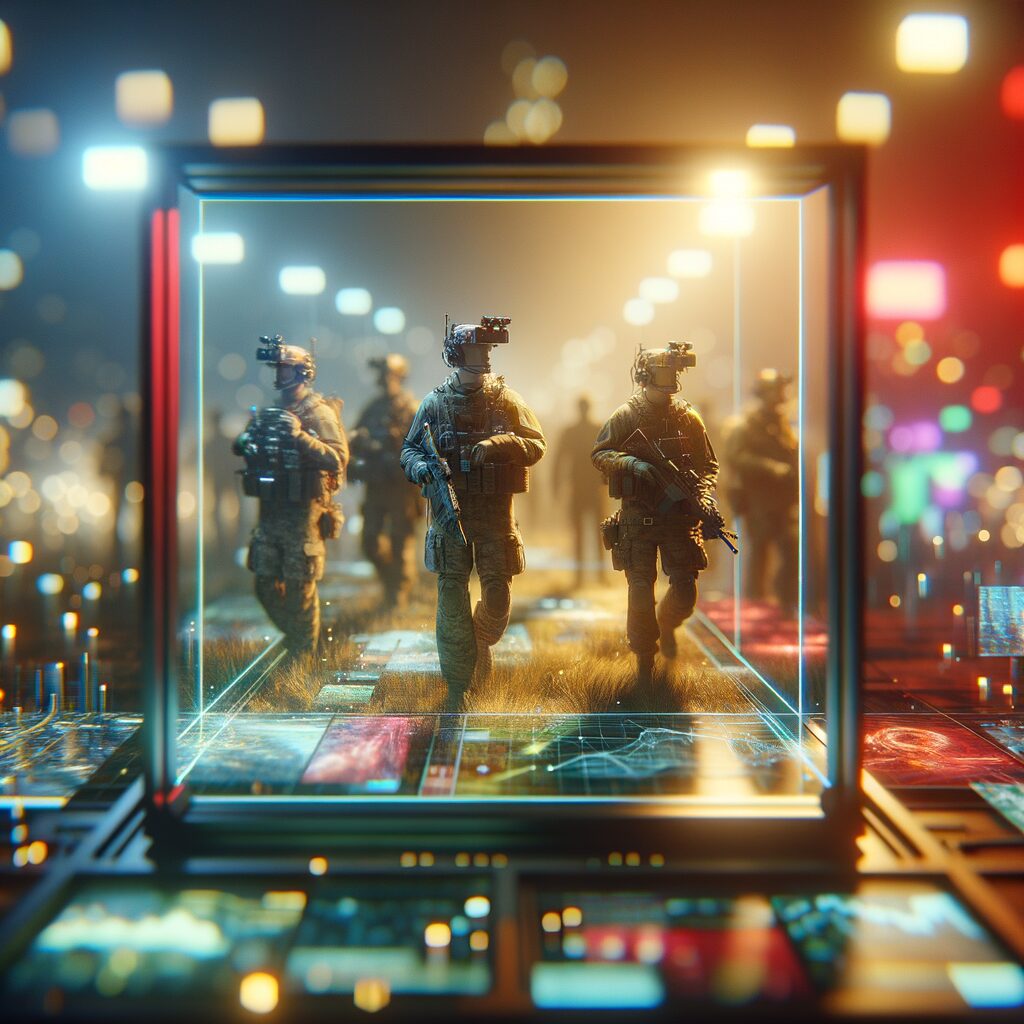Spatial Computing & the Death of the Screen: The Next Leap in Human-Computer Interaction
Imagine a world where the boundary between the physical and digital environments has disappeared. Welcome to the era of spatial computing, a revolutionary paradigm reshaping human-computer interaction and signaling the death of traditional screens. In this article, we’ll explore how simulations, digital twins, and immersive user interfaces (UIs) are transforming key industries like defense, healthcare, and logistics. Additionally, we’ll discuss AI’s emergence as a new user interface that may forever change the way we interact with technology.
Simulations and Digital Twins: Redefining Operational Capacities
At the core of spatial computing lies the power of simulations and digital twins, which are enabling unprecedented advancements across various sectors. These virtual replicas of physical assets allow for real-time analysis, strategic planning, and efficient operations without the constraints of physical limitations. Can you imagine training soldiers or medical personnel without the need for physical resources?
Consider the defense sector, where simulations can model operational scenarios that aren’t just theoretical exercises but vivid, interactive recreations of potential battlefields. Soldiers can simulate different terrains and combat situations, enhancing their preparedness and strategic planning. This not only increases safety but optimizes logistics and resource allocation.
In healthcare, digital twins offer hospitals a virtual mirror of their infrastructure, patient flow, and even individual patient anatomy. Imagine accurately predicting the outcome of surgical procedures or managing hospital capacity during a pandemic—these are becoming realities thanks to spatial computing.
Similarly, in logistics, digital twins help companies optimize supply chains by mirroring their entire ecosystem. Real-time data feeds into simulations that allow for proactive measures against potential disruptions, ensuring goods and services are delivered efficiently and effectively.
Immersive UIs: A New Era of Human-Computer Interaction
As spatial computing blurs the lines between reality and digital environments, immersive UIs become the cornerstone of this transformation. But what if you could interact with data and applications in a 3D environment, rather than confined to flat screens?
Imagine navigating a virtual dashboard that envelops you in a 360-degree workspace. Professionals can interact with complex datasets by manipulating them through gestures in a 3D visualization. The logistics industry, for instance, benefits from immersive navigation systems that provide real-time route adjustments, load optimizations, and emergency response strategies.
In the realm of healthcare, augmented reality (AR) overlays can guide surgeons through complex procedures or aid in medical training by providing interactive anatomical study tools. This level of interaction doesn’t just enhance understanding; it enables skills acquisition at an unparalleled pace.
Moreover, immersive UI isn’t limited to professional applications. Educational sectors are also tapping into the potential for interactive, virtual field trips or simulated lab experiments. The democratization of richly interactive learning experiences heralds a new day in education. Will traditional screens become relics of the past?
AI as the New User Interface: Transforming Interaction
The element that ties together these advances in spatial computing is the rise of AI as an integral component of the user interface. No longer just for data processing, AI is assuming the role of a facilitator, offering more intuitive, context-aware interactions than ever before.
Incorporating AI into spatial computing opens the door to intelligent environments that anticipate user needs. For example, in the defense sector, AI-driven simulations can dynamically adapt to user decisions, offering real-time feedback and adjustments. Isn’t it compelling to think of AI guiding strategists through complex scenarios?
Healthcare professionals are beginning to rely on AI-powered diagnostic tools that understand and process complex datasets, offering recommendations tailored to specific patient conditions. Could this lead to AI “colleagues” that support doctors in real-time during their practice?
Logistics, too, sees AI enhance spatial computing by optimizing route planning and warehouse management through predictive analytics. Businesses benefit from efficiency gains and cost reductions, ensuring that operations run smoothly with AI-powered foresight.
Emphasizing AI as the heart of the new user interface comes with the promise of seamless interaction, allowing for a natural blend of human intuition and machine precision.
Conclusion: Embrace the Interface Revolution
The death of the screen is not the end; it’s the beginning of an era where spatial computing redefines interaction across industries. Simulations, digital twins, and immersive UIs are not just enhancing operations, they’re revolutionizing them. As AI becomes the new user interface, the path forward is paved with unprecedented possibilities. How are you preparing for the next interface paradigm? As we move beyond current technologies, embracing these advancements will shape a future where human and digital exist in perfect harmony.

